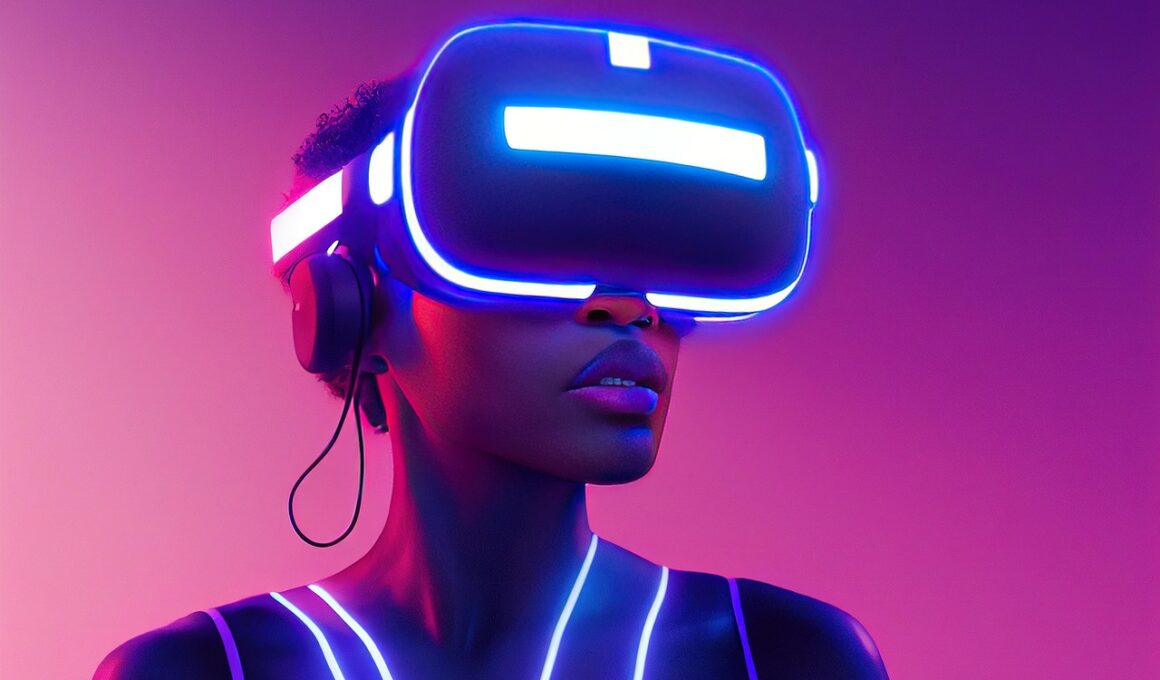How AR Challenges and Quizzes Boost Social Media Follower Interaction
Augmented Reality (AR) has transformed the way brands interact with their audience on social media. Leveraging AR challenges and quizzes allows users to engage uniquely while enhancing brand visibility. First, quizzes can test knowledge about a product, generating excitement and anticipation. For instance, brands like Pepsi have successfully implemented AR filters, captivating audiences with fun and interactive experiences. Secondly, making these challenges competitive can escalate follower interaction. Contests that reward participants with giveaways can incentivize users to take part actively. This approach creates a sense of community where users share their experiences and achievements, amplifying social reach. Thirdly, using AR technology in storytelling enhances user engagement, providing immersive experiences that resonate emotionally. Users are more likely to share content that genuinely entertains or intrigues them. Finally, incorporating visual elements like 3D models and real-time feedback can substantially enhance participation rates. This not only keeps the audience intrigued but also fosters a stronger connection between the brand and its followers. Therefore, AR challenges and quizzes are not just trends; they’re integral in building loyal relationships on social media.
Another essential aspect of AR campaigns is their ability to personalize user experiences. Personalization makes users feel valued, leading to enhanced loyalty levels. By tailoring quizzes to reflect individual preferences or past behaviors, brands can create a more relevant engagement. Additionally, the interactive nature of AR challenges invites users to provide feedback, helping brands improve their offerings. This feedback loop ensures that campaigns remain fresh and engaging. Using analytics tools to track user interactions can identify what resonates with the audience effectively. Moreover, incorporating gamification elements adds another layer of motivation for users, pushing them to participate more willingly. For instance, introducing leaderboards or achievement badges can encourage repeated interactions. Gamification parallels the psychology of playing games, engaging users in competition or collaboration, which translates to social media activity. When users feel like they are part of something bigger than themselves, their loyalty intensifies. Moreover, AR enhances these interactions’ visual appeal. Compelling aesthetics create memorable experiences that users want to share, contributing to organic reach. Consequently, brands can capitalize on these organic interactions to expand their customer base, thereby amplifying their social media presence significantly.
The Impact of User-Generated Content on Campaign Success
User-generated content (UGC) plays a pivotal role in enhancing AR campaign interactions. By encouraging users to share their AR experiences, brands can cultivate a sense of community and trust. UGC acts as authentic testimonials that resonate more powerfully with potential customers than traditional advertisements. When users showcase their participation in AR quizzes or challenges, they create a ripple effect that attracts others to join in. Brands can leverage this organic content by reposting and highlighting user contributions, further incentivizing participation. This strategy can lead to increased follower growth, as people are drawn to platforms showcasing genuine interactions. A prime example is the #ARChallenge campaigns where users create content around their favorite products. It not only builds a library of engaging materials but also strengthens brand identity and awareness. Brands often find that followers appreciate being recognized for their contributions, making them feel valued and connected. Moreover, enhancing followers’ emotional investments can lead to higher conversion rates, turning casual observations into meaningful engagement, ultimately driving sales. This cycle of content creation, sharing, and recognition embodies a potent strategy for increasing brand visibility and fostering lasting relationships.
Another critical benefit of AR challenges and quizzes is their ability to cater to diverse audiences. By offering varying levels of difficulty, campaigns can attract a broader demographic while maintaining user interest. For example, a brand can introduce beginner, intermediate, and advanced quizzes, ensuring everyone finds a suitable entry point. This inclusivity encourages participation from users with different skill levels, enhancing engagement across the board. Furthermore, AR technology offers endless customization options, allowing brands to tailor challenges to fit specific audience segments. By personalizing content based on demographics or interests, companies can resonate more profoundly with their target markets. They can analyze trends and adapt campaigns accordingly, producing vital insights about customer preferences. Consequently, AR experiences can be made relevant and timely, ensuring users find value in their interactions. Moreover, addressing cultural nuances when designing quizzes fosters a sense of belonging among diverse followers. For instance, localizing content for different regions helps build rapport with international audiences. By making users feel included and understood, brands foster loyalty, encouraging repeat participation in future challenges, creating a virtuous cycle of engagement that sustains long-term follower interaction.
Challenges in Implementing AR Campaigns
While AR campaigns provide numerous benefits, they also pose specific challenges that brands must navigate. Firstly, the cost associated with developing high-quality AR experiences can be significant. Without proper planning or budget allocation, brands may struggle to create impactful campaigns that deliver desired outcomes. Moreover, not all users have access to advanced AR features on their devices, causing barriers to participation. This limitation could potentially alienate a segment of the audience. Therefore, brands must ensure their AR content is designed to accommodate various devices for wider accessibility. Secondly, creating engaging and intuitive content is crucial but challenging. If AR challenges are too complex or poorly executed, users may become frustrated and disengaged. Ensuring a seamless user experience requires thorough testing and iterative design processes. Additionally, brands must invest time in marketing their AR campaigns effectively; simply creating content isn’t enough. Promoting challenges through influencer partnerships or engaging ads can drive initial traffic. Last but not least, measuring the efficacy of AR campaigns can be complex. Brands must adopt analytics tools that can track user interaction, measuring various success metrics to assess campaign performance accurately.
Despite these challenges, the future of AR campaigns looks promising. As technology continues to evolve, brands are adopting innovative tools that streamline the implementation process. New platforms are emerging that offer simplified AR development kits, making entry into this space more feasible for smaller businesses. Cloud-based AR solutions further enhance accessibility, helping brands overcome device limitations. This democratization of AR technology allows businesses to experiment with how they engage users. Additionally, as consumer demand for immersive experiences increases, more organizations will consider incorporating AR tactics into their marketing strategies. Furthermore, as AR becomes more commonplace, user familiarity will drive engagement rates. Brands that invest in creating engaging AR experiences early will position themselves as leaders in their respective industries. Moreover, fostering partnerships with tech companies ensures access to the latest innovations, offering exciting opportunities to deliver cutting-edge content. Thus, evolving with these trends will be paramount for brands to maintain competitive advantages. The ability to adapt swiftly in this dynamic landscape will be crucial in leveraging AR as a significant driver of social media engagement.
Conclusion: The Future of AR Campaigns
In conclusion, AR challenges and quizzes offer immense potential for driving social media engagement. By combining entertainment, education, and interaction, brands can build meaningful connections with their audience. The importance of personalization and user-generated content cannot be underestimated; these elements foster loyalty and organic growth. Furthermore, overcoming technological barriers and incorporating gamification can enhance user motivation. As brands continue to innovate and embrace AR’s capabilities, their ability to engage with customers will only improve. However, strategic planning and execution are essential in navigating the challenges inherent to AR campaigns. By investing in high-quality content and effective marketing strategies, businesses can maximize their impact on social media. The evolution of AR technology will inevitably lead to more accessible tools, enticing even more brands to enter this space. As a result, the landscape of social media interactions will shift profoundly, emphasizing immersive and experiential engagement over traditional methods. Looking ahead, it is clear that AR will play a critical role in shaping the future of social media campaigns, leading brands towards greater interaction and meaningful connections with their followers.
Ultimately, the intertwining of augmented reality and social media presents a unique opportunity for brands looking to enhance their connection with audiences. By engaging in AR challenges and quizzes, users feel like active participants rather than passive consumers. This increase in interaction is crucial for building a loyal follower base. Brands that recognize the shifting trends and adapt accordingly will excel in this increasingly competitive digital landscape. Providing users with meaningful experiences through AR leads to enriched relationships, resulting not just in follower growth but also improved conversions. Therefore, investing in AR technology should be seen as a long-term strategy, essential for staying relevant and competitive. Engaging followers through innovative content offers brands the chance to stand out in a busy feed, ensuring visibility and sustained engagement. Moreover, as more consumers embrace AR experiences, those brands actively participating will likely carve out a distinct identity within their marketplaces. The possibilities are endless; as users continue to share their experiences widely, brands can benefit from increased reach. Ultimately, it is those willing to innovate and invest in AR technology that will shape the future of their social media strategies.


